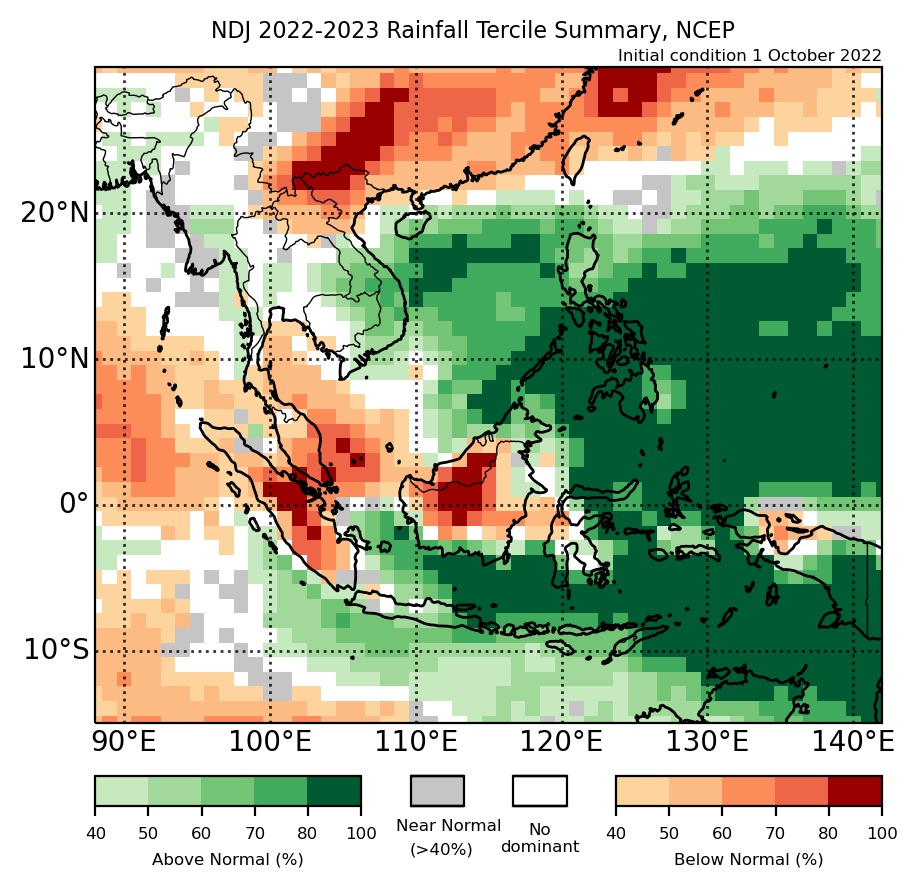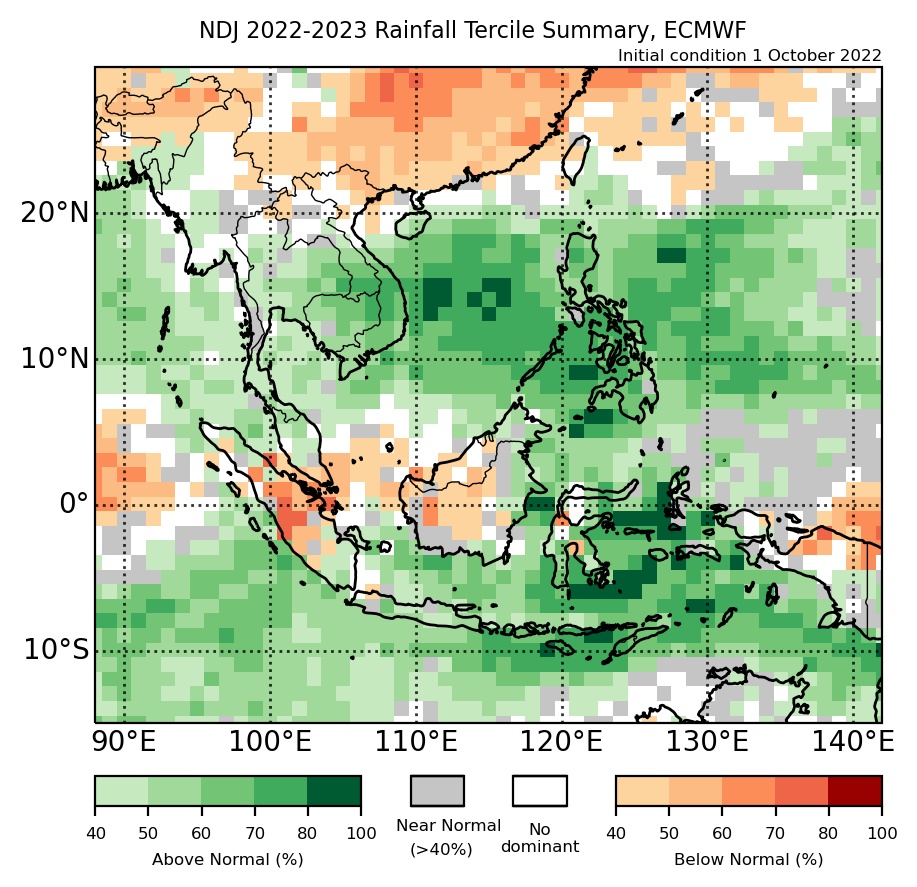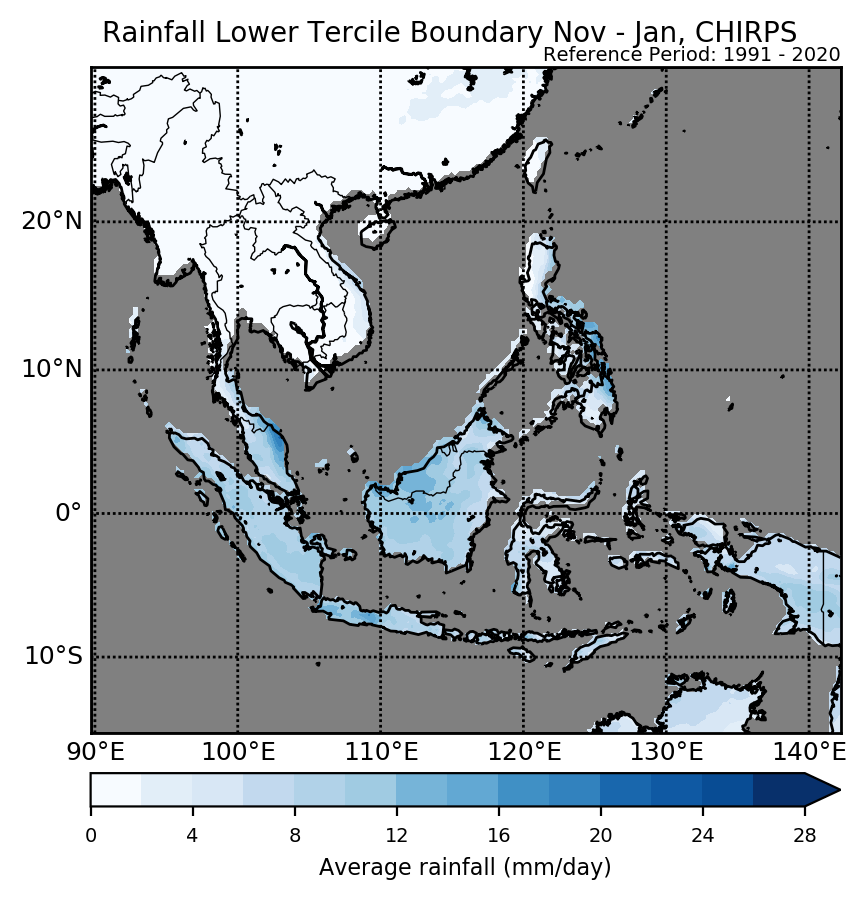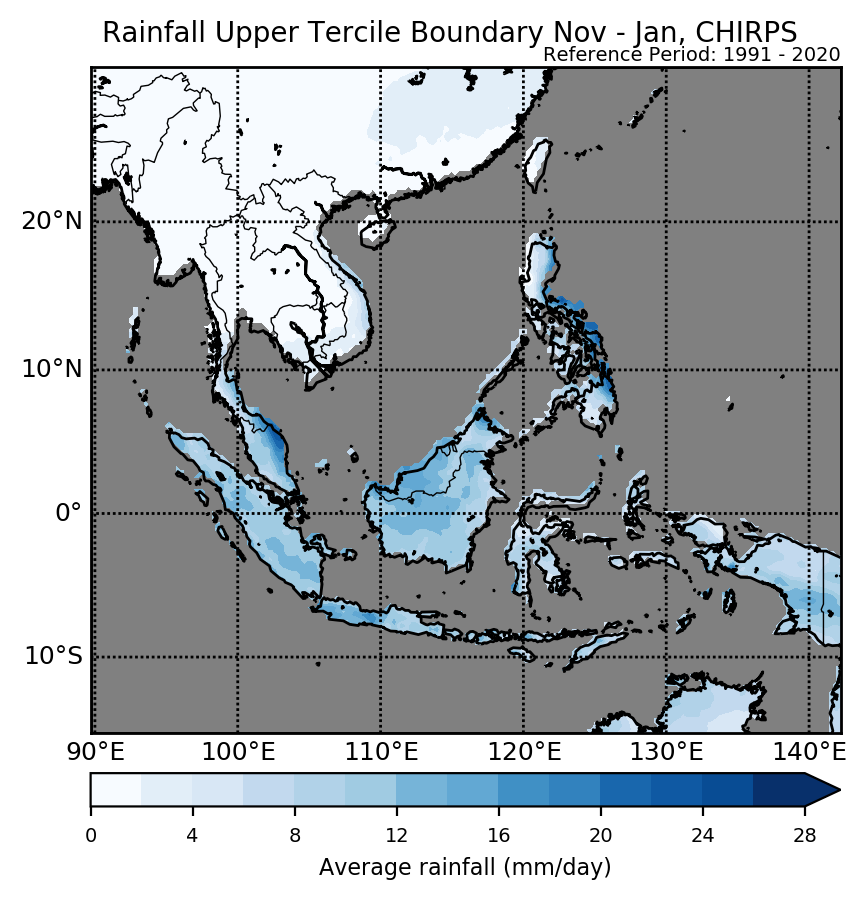Rainfall
Seasonal Rainfall Outlook: November 2022 - January 2023 (NDJ)
Issued: 31 Oct 2022
For NDJ 2022-2023, above-normal rainfall is predicted over much of the southern and eastern Maritime Continent, as well as southeastern Mainland southeast Asia. Below-normal rainfall is predicted over parts of the western Maritime Continent and Borneo.
For NDJ 2022-2023, based on the multi-model ensemble (Figure 4), there is mixed of below- and above-normal rainfall over the Maritime Continent, with an increased chance of above-normal rainfall over southern and eastern Maritime Continent, and below-normal rainfall over parts of the western Maritime Continent and Borneo. The NCEP model (Figure 1) shows the highest likelihood of both below- and above-normal rainfall, followed by the UK Met Office model (Figure 3) and then the ECMWF model (Figure 2). Model skill for above-normal rainfall is moderate to good over the southern and eastern Maritime Continent. However, model skill is low to moderate where below-normal rainfall is predicted.
Over the Mainland Southeast Asia, there is an increase in chance of above-normal rainfall over the southeastern region, below-normal rainfall over the northeastern area, and no dominant tercile elsewhere. However, the models’ skill is low for most of Mainland Southeast Asia, although it is moderate to good for the easternmost part of the region.
Over the Mainland Southeast Asia, there is an increase in chance of above-normal rainfall over the southeastern region, below-normal rainfall over the northeastern area, and no dominant tercile elsewhere. However, the models’ skill is low for most of Mainland Southeast Asia, although it is moderate to good for the easternmost part of the region.

Figure 1: Rainfall tercile summary predictions of NCEP model for NDJ 2022-2023 (contains modified Copernicus C3S information).

Figure 2: Rainfall tercile summary predictions of ECMWF model for NDJ 2022-2023 (contains modified Copernicus C3S information).

Figure 5: Average climatological rainfall's lower tercile boundary for NDJ based on CHIRPS (Reference period: 1991-2020).

Figure 6: Average climatological rainfall's upper tercile boundary for NDJ based on CHIRPS (Reference period: 1991-2020).
The qualitative outlook is assessed for the region in general. For specific updates on the national scale, the relevant ASEAN National Meteorological and Hydrological Services should be consulted.